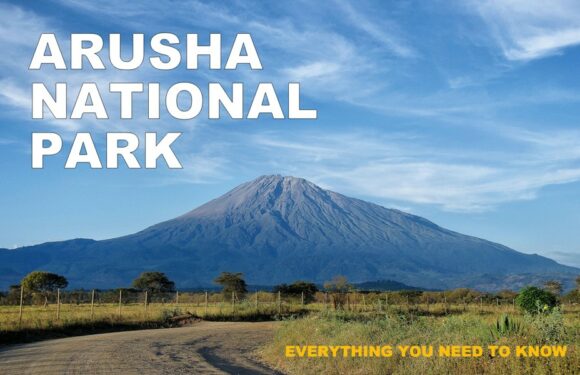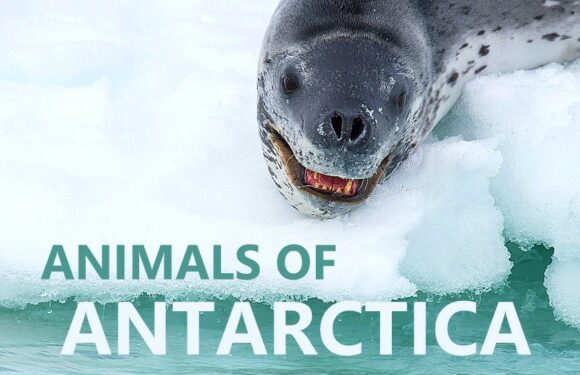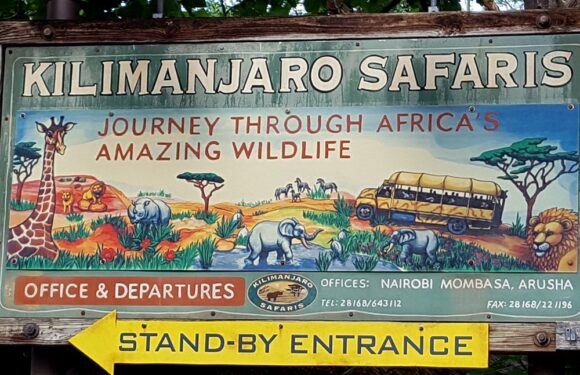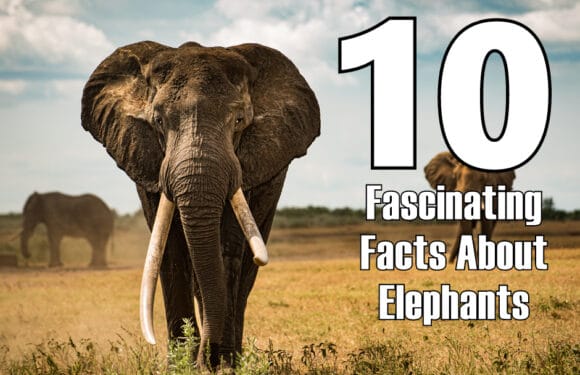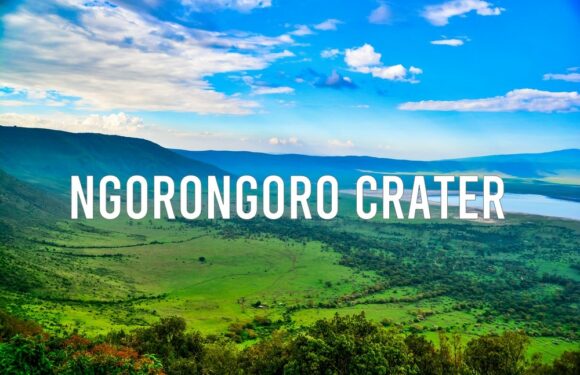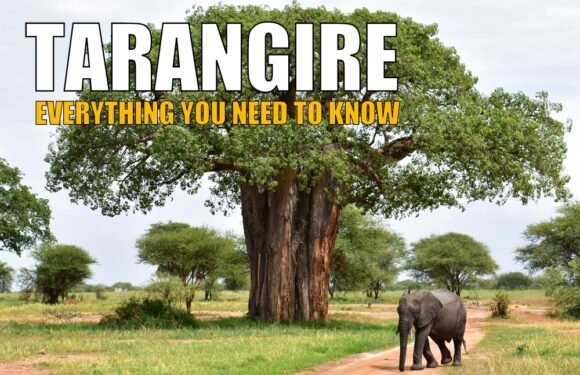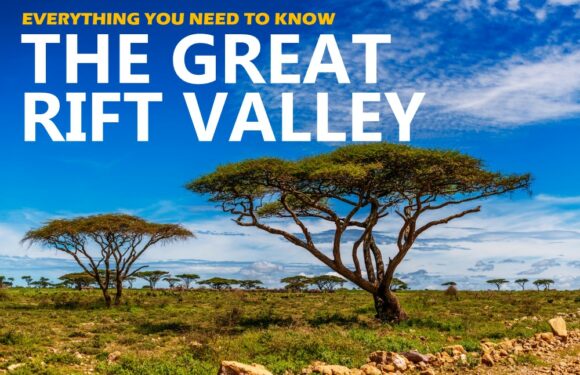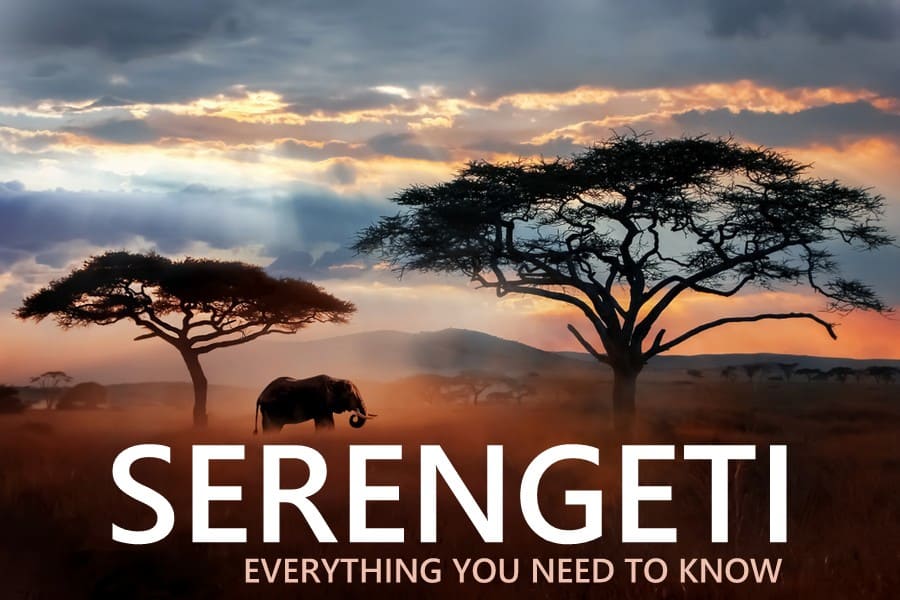
Where is the Serengeti?
The Serengeti is located in Tanzania, a country in East Africa. The famous national park, known for its untamed wildlife, is located in northern Tanzania. Part of its border to the north is adjacent to Kenya’s Masai Mara National Park.
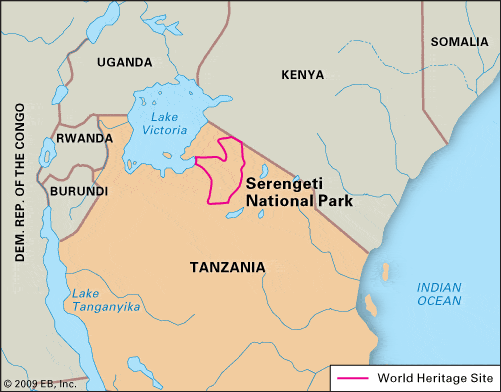
How Big is the Serengeti?
The Serengeti is an immense expanse of land. It covers approximately 12,000 square miles (30,000 square kilometers). To put this into perspective, it’s nearly as large as the state of Connecticut or about one-tenth the size of Florida in the USA. The Serengeti is larger than Wales in the UK. It is almost as large as Vancouver Island, Canada.
What Does Serengeti Mean?
The word ‘Serengeti’ is derived from the Masai word “siringet”, which translates to “the place where the land runs on forever”. The poetic name is a perfect description of the seemingly endless, open plains of the Serengeti.
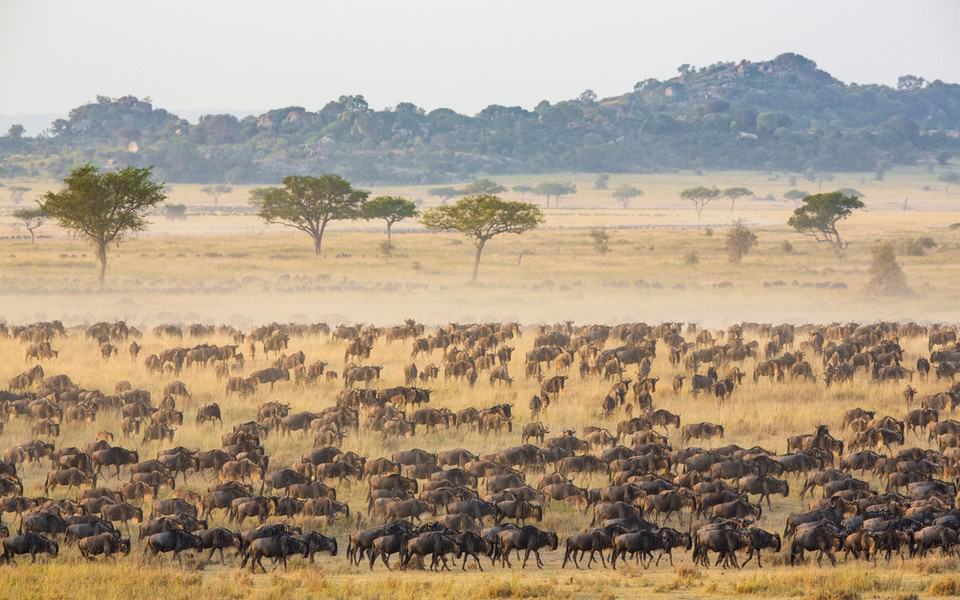
Why is the Serengeti Famous?
The Serengeti is as one of the most iconic and revered natural wonders in the world. Its fame is not merely by chance but is the collection of several facets that make it notable of natural landscapes.
First and foremost, the Serengeti is celebrated for its Great Migration, an annual spectacle unrivaled in scale and drama. Beyond the migration, the Serengeti’s biodiversity is astonishing. It’s a sanctuary for an incredible array of wildlife. Culturally, the Serengeti is rich and storied, intertwined with the lives of indigenous communities like the Masai. And finally, the landscape itself, where endless savannas meet the sky, is gorgeous.
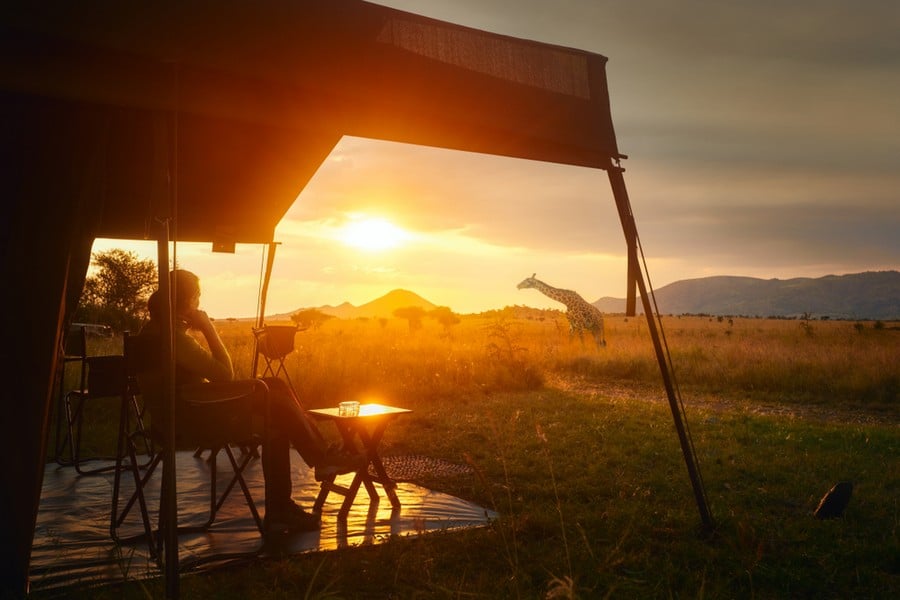
The Serengeti offers a unforgettable safari experience. The sheer abundance of wildlife, coupled with the natural beauty of its landscapes, makes it a photographer’s and nature lover’s dream.
How was the Serengeti Formed?
Serengeti’s formation began over 25 million years ago. This period was marked by significant tectonic activity in the East African region. The movement of the Earth’s crust led to the creation of the Great Rift Valley, an incredible geological feature that stretches from the Red Sea down through Eastern Africa.
As the rift valley formed, it triggered volcanic activity in the region. This activity was instrumental in shaping the landscape. The Ngorongoro Crater, a prominent feature in the Serengeti ecosystem, is a prime example of this volcanic past as is Mount Kilimanjaro, the tallest free standing mountain on Earth.
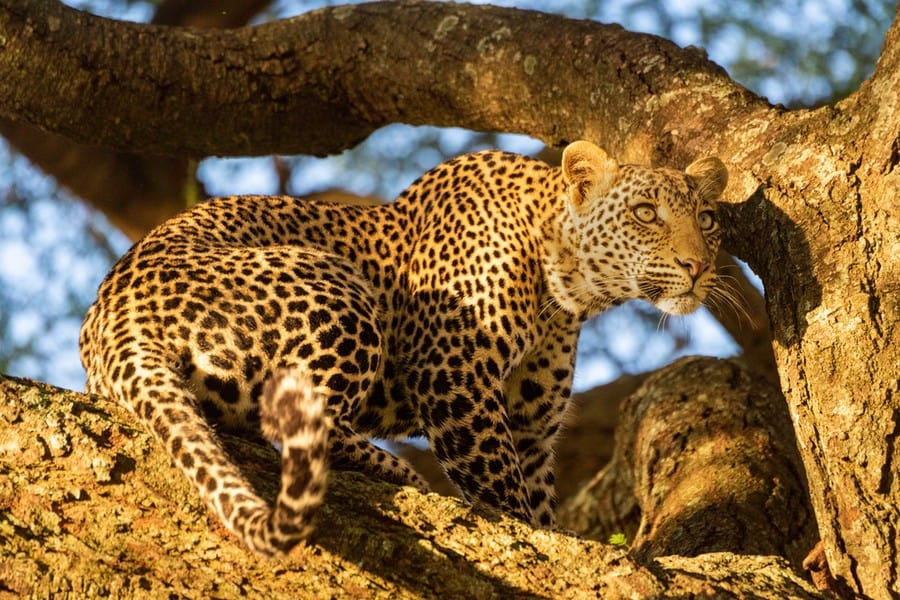
The vast plains of the Serengeti are the result of volcanic ash and debris from these eruptions. Over time, this material was spread by the winds and settled, creating the rich and fertile soils that characterize the Serengeti today. These soils support the growth of the savannah grasslands, which in turn sustain the diverse wildlife of the region.
Over the millennia, water and climate have played crucial roles in sculpting the Serengeti. Rivers, such as the Mara and the Grumeti, have carved their way through the landscape, creating riverine forests and providing essential water sources for the wildlife. The climate, with its cycles of wet and dry seasons, has further influenced the vegetation patterns and the migration of animals, particularly the Great Migration.
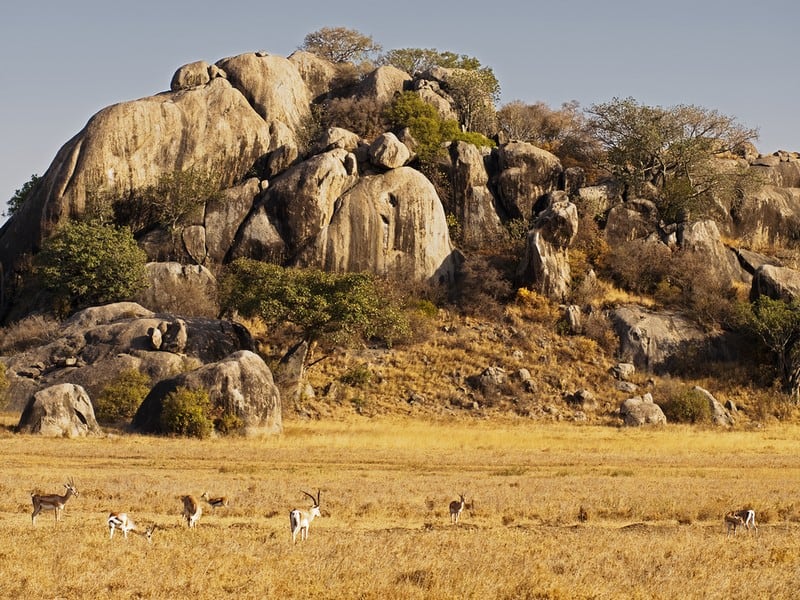
The Serengeti is dotted with kopjes – isolated rock outcrops formed from ancient granite. These kopjes are significant in the landscape, providing habitats for a variety of wildlife and plants. They are remnants of the Precambrian rocks that are much older than the surrounding volcanic material.
What Animals Live in the Serengeti?
The park is a haven for wildlife, with over 70 large mammal and 500 bird species. It’s one of the best places to spot the ‘Big Five.‘
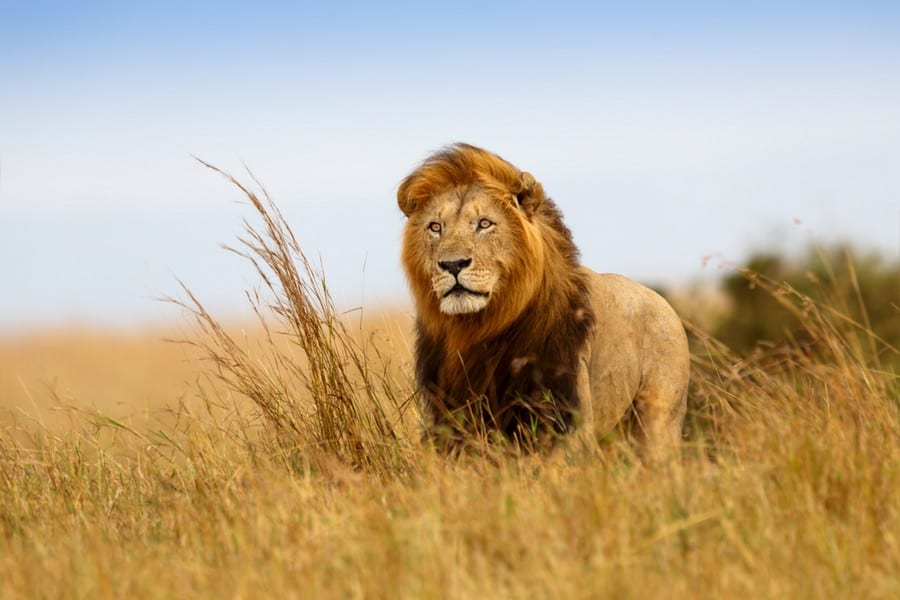
Here is a list of some of the animals that you can see within the Serengeti: lion, elephant, leopard, cheetah, buffalo, rhino, wildebeest, zebra, giraffe, hippopotamus, crocodile, hyena, baboon, warthog, impala, gazelle, mongoose, dik-dik, eland, topi, ostrich, jackal, serval, kudu, bushbuck, waterbuck, hartebeest, flamingo, vulture, bat-eared fox.
What is the Great Migration?
The Great Migration refers to the annual movement of over two million wildebeest, zebras, and gazelles across the Serengeti-Mara ecosystem. This journey is a spectacle of life and survival in its most primal form.
When is the Great Migration?
A common misconception is that the migration only happens during a small window of time every year. In fact, the migration happens year round.
These herds follow a circular route, spanning approximately 500 miles (800 kilometers). The animals navigate through the Serengeti in Tanzania to the Maasai Mara in Kenya and back again every year.
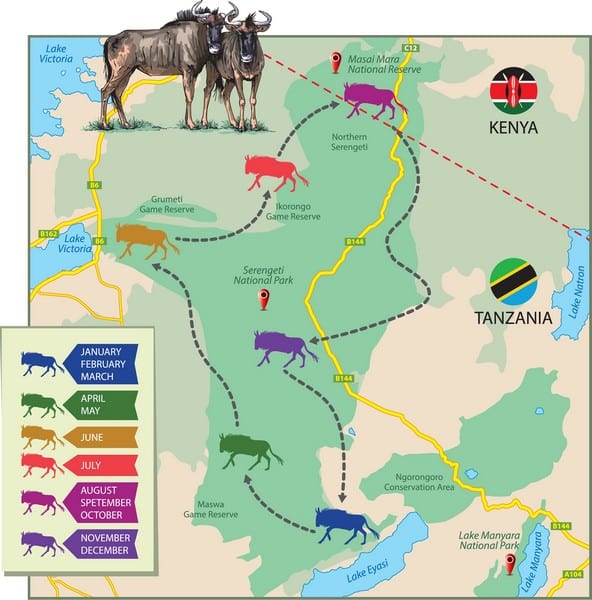
The Serengeti’s weather patterns are a guiding force behind the Great Migration. The movement of the herds follows the rains, in search of fresh pastures, making the weather a critical element.
Note that the Great Migration is more than just a movement of animals; it shapes and sustains the ecosystem. The herds play a crucial role in the health of the savannah. Their grazing patterns influence the vegetation and their trek provides sustenance for a host of predators. Lions, cheetahs, hyenas, and crocodiles all rely on the migration for food, creating a complex interconnection of predator and prey.
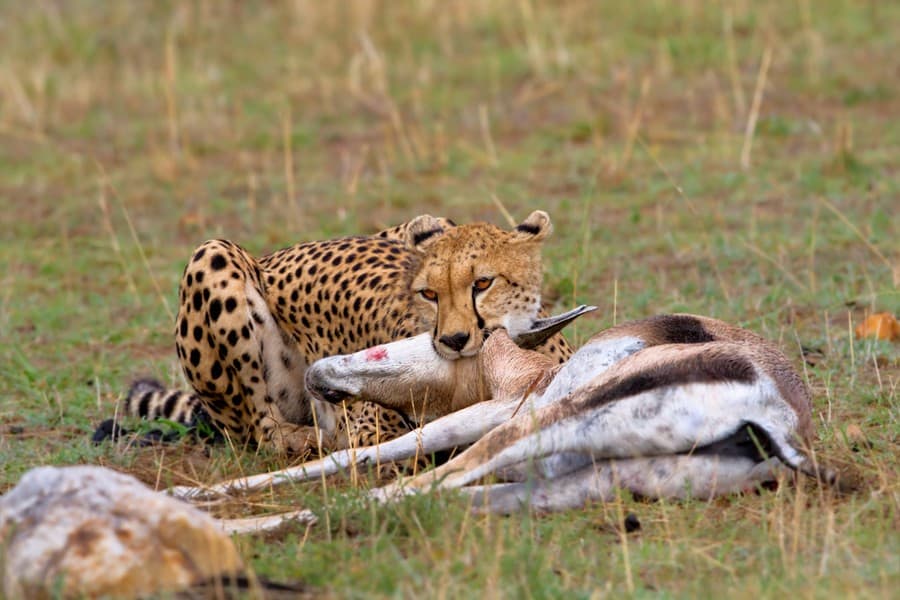
What are the Differences Between the Areas of the Serengeti?
The vast area of the Serengeti can be quartered into different sections. Each has its own charm.
Southern Serengeti
Southern Serengeti is the most visited area as visitors usually enter the park from the Ngorongoro Conservation Area to the south. This region is characterized by open plains and short grasses. The wildebeest calving season occurs here from December to March. The Southern Serengeti, especially around Ndutu, becomes a nursery as around 8,000 wildebeests are born every day! It sets the stage for dramatic predator-prey interactions. Beyond the migration, this area is also rich in resident wildlife, including cheetahs and hyenas.
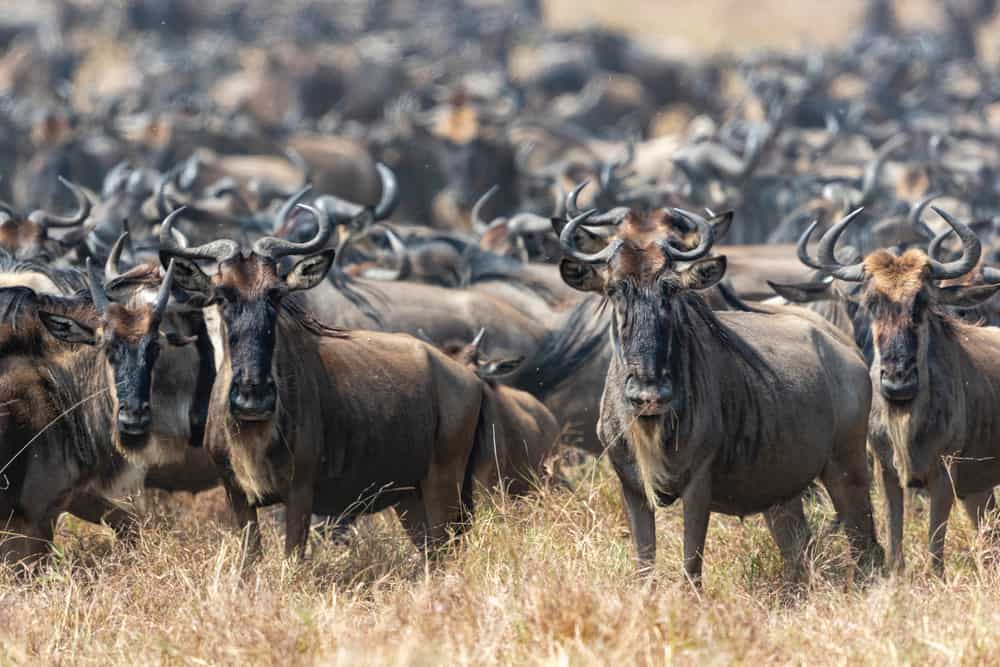
Western Serengeti
Western Serengeti is known as the Western Corridor. Following the meandering path of the Grumeti River, this area is defined by its dense forests and marshy areas. Unlike the open plains in the south, this landscape is wooded and hily. Grumeti is renowned for its part in the Great Migration. During May and June, massive herds attempt to cross the waters inhabited by Nile crocodiles.
The Western Corridor also offers a more secluded experience, with campsites and lodges located in more remote settings. The Grumeti Reserve is a private concession in the Western Serengeti, known for its exclusivity and luxurious safari experiences.
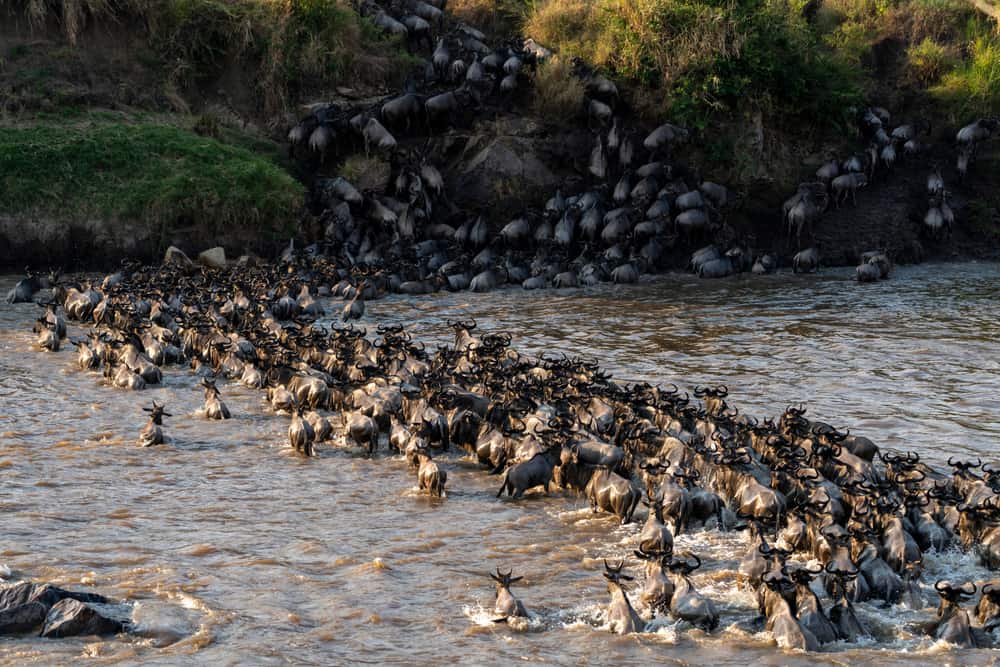
Central Serengeti
Central Serengeti is the heart of the park. This area, also known as Seronera Valley, is a melting pot of habitats including savannahs, forests, and hills. It’s a year-round haven for wildlife, particularly known for its high concentration of big cats – lion, leopard and cheetah. This area is a prime spot to see the Great Migration from April to June.
The Seronera River, Serenera Airstrip, and the Visitor Center stand as key landmarks, providing insights and stunning game viewing opportunities. The hippo pools, where the course of the Seronera River joins the Orangi River, are inhabited by massive numbers of hippos that spend the day immersed in the water.
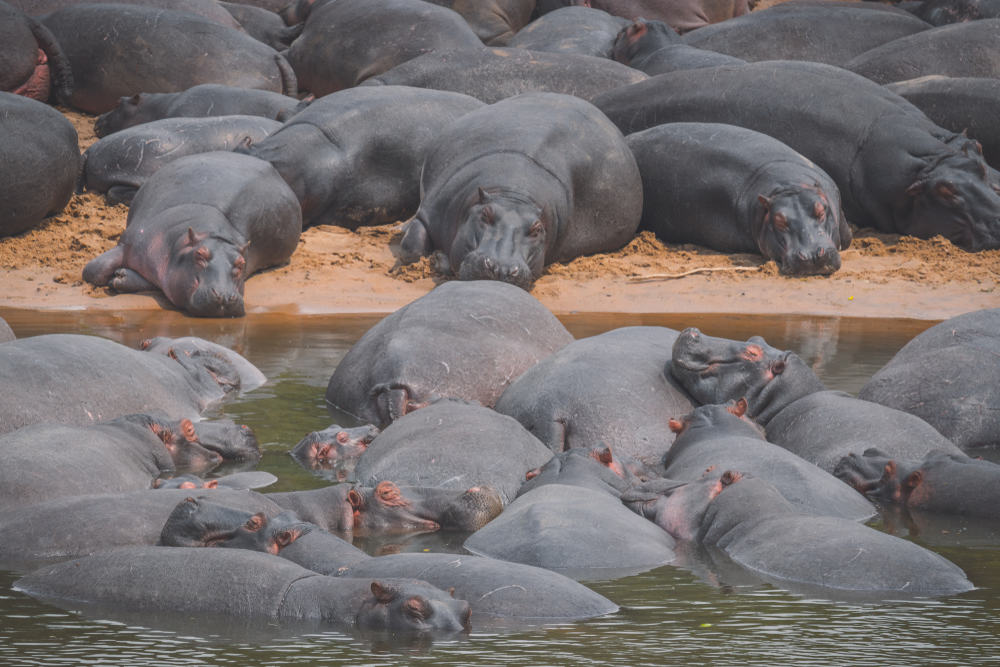
Central Serengeti is also where hot air balloon safaris are operated.
Northern Serengeti
Further north, the landscape transforms into rugged hills and valleys. The Northern Serengeti is famed for the Mara River crossings during the migration, typically from July to October. Apart from the migrating herds, the region is home to lions, leopards, elephants, giraffes, and various antelope species. The area’s relative inaccessibility keeps human impact low, offering a more authentic wildlife experience. This region, including the scenic Lobo area, offers a sense of solitude and untouched beauty.
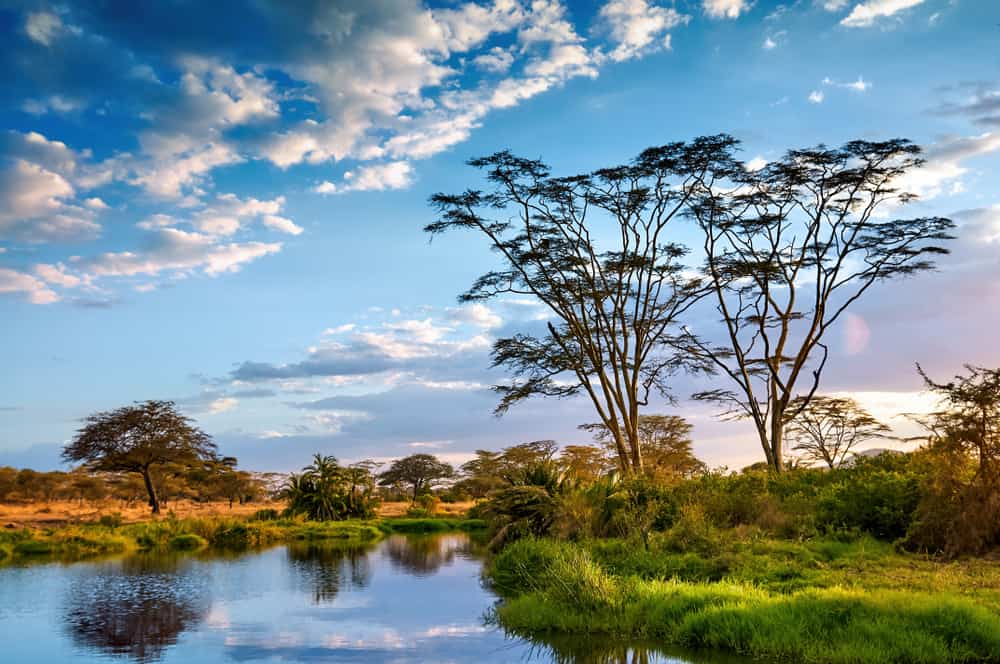
What is the Weather in the Serengeti?
Despite its equatorial location, the Serengeti’s temperatures are relatively moderate due to its elevation. However, visitors should be prepared for cooler mornings and evenings.
The Serengeti’s weather is typically divided into dry and wet seasons.
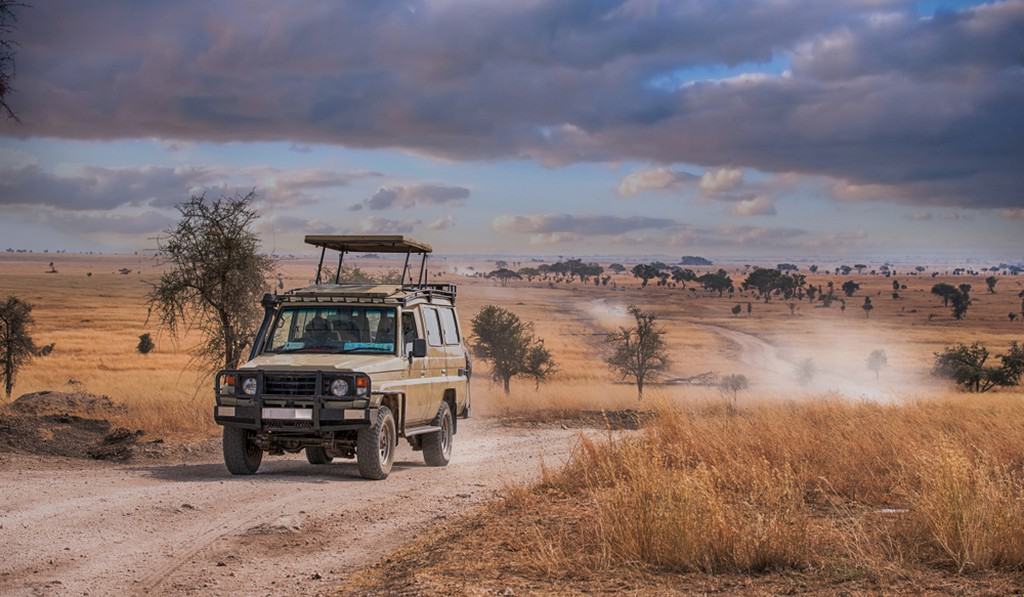
The Dry Season (June to October)
This period is marked by clear, sunny days and cooler nights. The lack of rain means the vegetation is sparse, and water sources become precious, drawing wildlife to predictable locations.
- Temperature: Daytime temperatures are generally warm and can reach up to 77-86°F (25-30°C). However, the absence of clouds can lead to hotter days, especially around midday. Nights can be surprisingly cool, with temperatures sometimes dropping to around 57-61°F (14-16°C ).
- Rainfall: Rain is scarce during these months, leading to drier conditions. Water sources become limited, which has a significant impact on wildlife movements and behaviors.
- Wildlife: The dry season is often considered the best time for wildlife viewing, as animals congregate around waterholes and rivers, making them easier to spot.
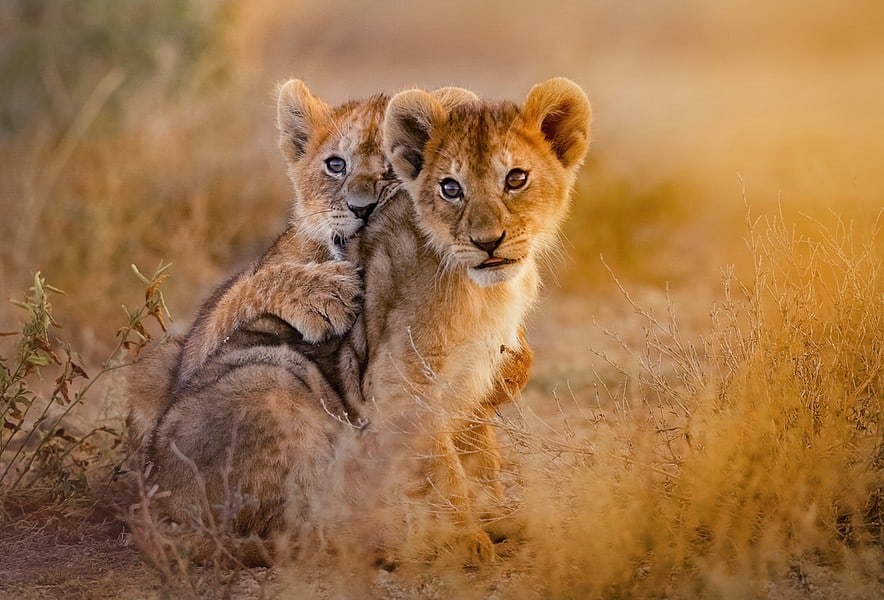
The Wet Season (November to May)
During the wet season, the Serengeti is transformed by rain showers. The rains bring a lush, green vibrancy to the landscape. This is a time of abundance, as fresh grazing and water are plentiful.
- Temperature: Daytime temperatures are milder compared to the dry season, hovering around 68-79°F (20-26°C). The presence of clouds and increased humidity contribute to the cooler temperatures. Nights remain relatively cool, similar to the dry season, although they can be a bit warmer due to the cloud cover, averaging around 59-64°F (15-18°C).
- Rainfall: The wet season is characterized by two phases: the short rains (November to December) and the long rains (March to May). Rainfall during this time is often in the form of short, heavy showers, typically in the late afternoon or evening.
- Wildlife: The short rains coincide with the calving season in the southern Serengeti, a period teeming with new life.
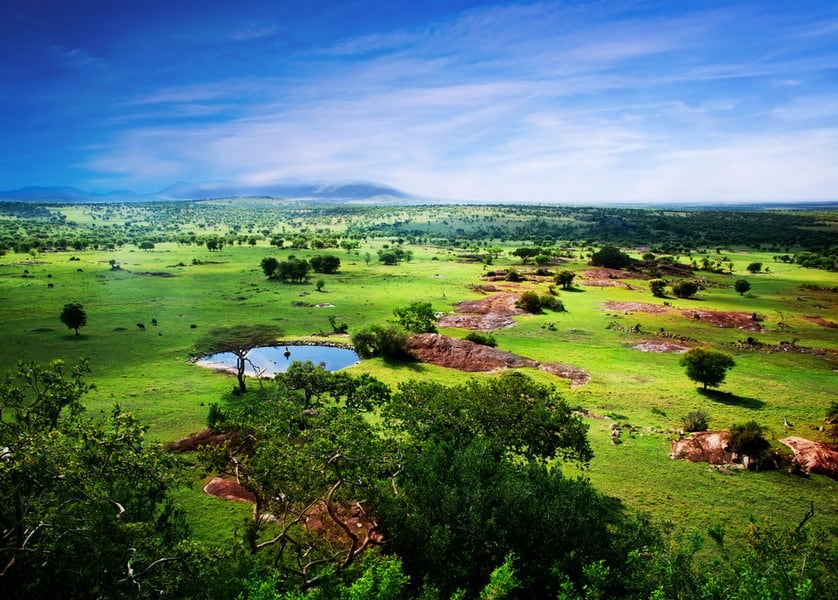
When is the Best Time to View the Great Migration?
The game viewing in Serengeti is great year round.
The Great Migration in the Serengeti is a dynamic, year-round event. The movement of animals follows a somewhat predictable pattern influenced by the rains. Keep in mind that only half of the Serengeti animal population participates in the migration. So there are plenty of animals to see in the whole park no matter when you visit.
Here’s an overview of the migration patterns, month by month:
January to March: Calving Season
- Location: Southern Serengeti, Ndutu Area
- Event: This is the time for calving, a period when around 500,000 calves are born, mostly in a short three-week window. The abundance of young and vulnerable prey attracts predators, leading to dramatic hunting scenes.
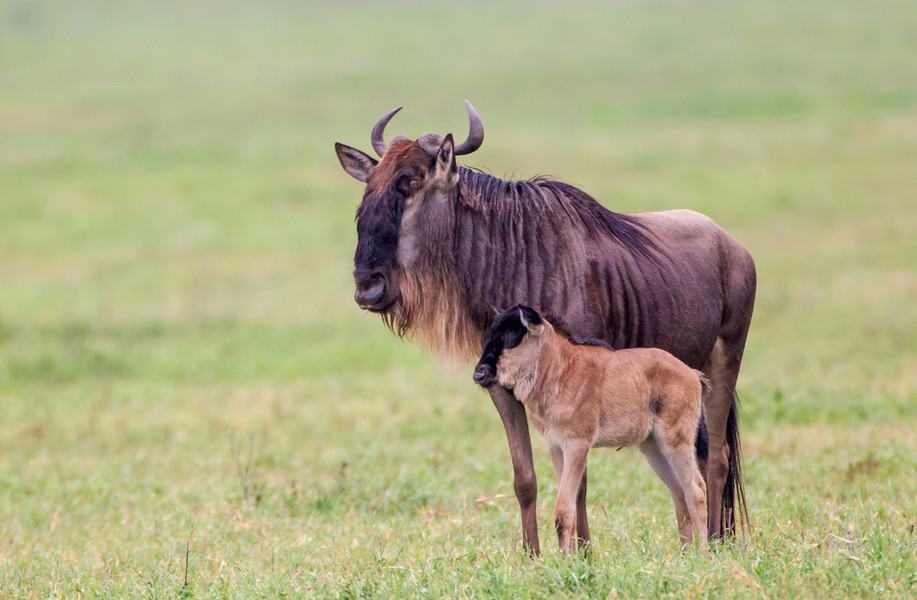
April to May: The Long Rains
- Location: Central and Western Serengeti
- Event: With the onset of the long rains, the herds begin moving northwest towards the greener pastures of the central and western regions of the Serengeti. This is a transitional period, often muddy and challenging for the animals.
June to July: Grumeti River Crossing
- Location: Western Serengeti
- Event: The herds encounter their first major obstacle, the Grumeti River. These river crossings are perilous, often involving deadly encounters with crocodiles and stampedes.
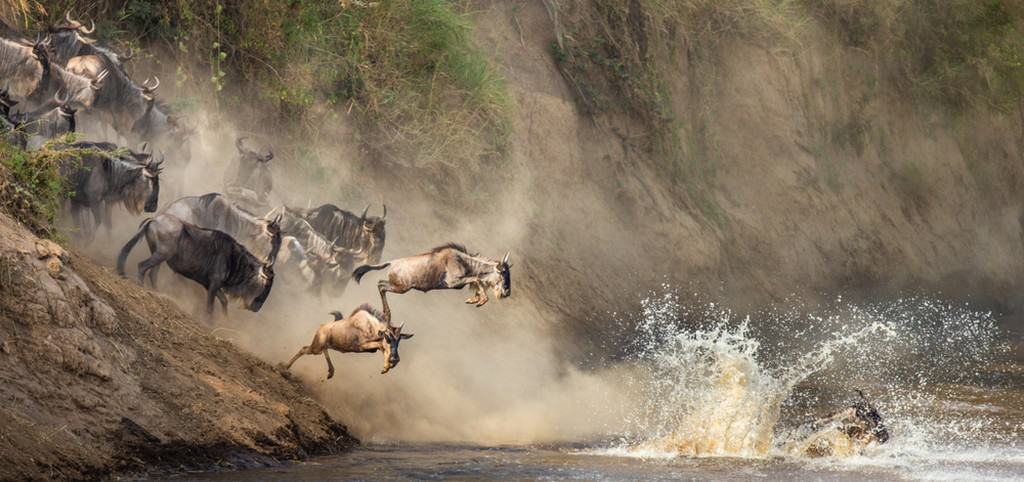
August to September: Heading North
- Location: Northern Serengeti, Lobo Area
- Event: The herds continue northwards, and by late July or August, they start to reach the northern Serengeti. The landscape here is hilly, and the journey is arduous.
October: Mara River Crossing
- Location: Northern Serengeti and Maasai Mara
- Event: The most dramatic river crossings occur at the Mara River, often peaking around September. The herds cross back and forth between the Serengeti and Maasai Mara in search of the best grazing.
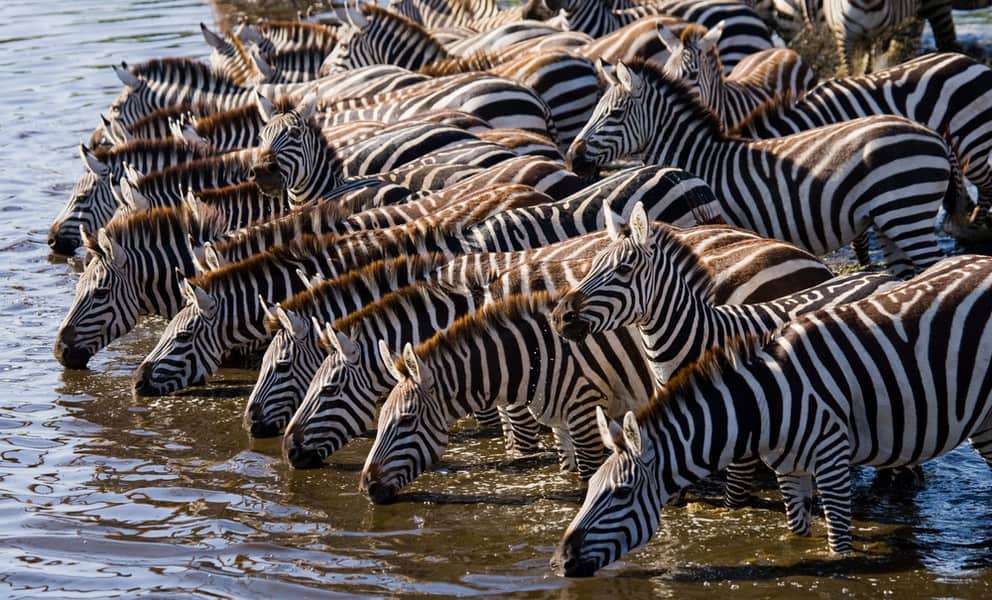
November to December: Moving South
- Location: Moving from Maasai Mara back to the Serengeti
- Event: Triggered by the short rains, the herds begin their long trek back to the southern Serengeti, completing their annual cycle. This is a time of movement, with the animals traversing vast distances.
Generally speaking, the dry seasons in their entirety are considered great times to visit the Serengeti. The two dry seasons are from June to October and from December to mid-March.
The best times to view the Great Migration are from July to August and from January to mid-March. During the months of July and August, the herds are in the northern and western areas of the park. These are the busiest and most popular months. During the calving season, from January to mid-March, half a million wildebeest give birth. The predators are very active in their search for easy meals.
It’s important to note that while this pattern is typical, the exact timing can vary year to year based on rainfall and other environmental factors. The Great Migration is a fluid, ever-changing event, part of what makes it so captivating. Each season in the cycle brings its own challenges and spectacles, making any time of year a fascinating period to witness this natural wonder.
When Was Serengeti National Park Created?
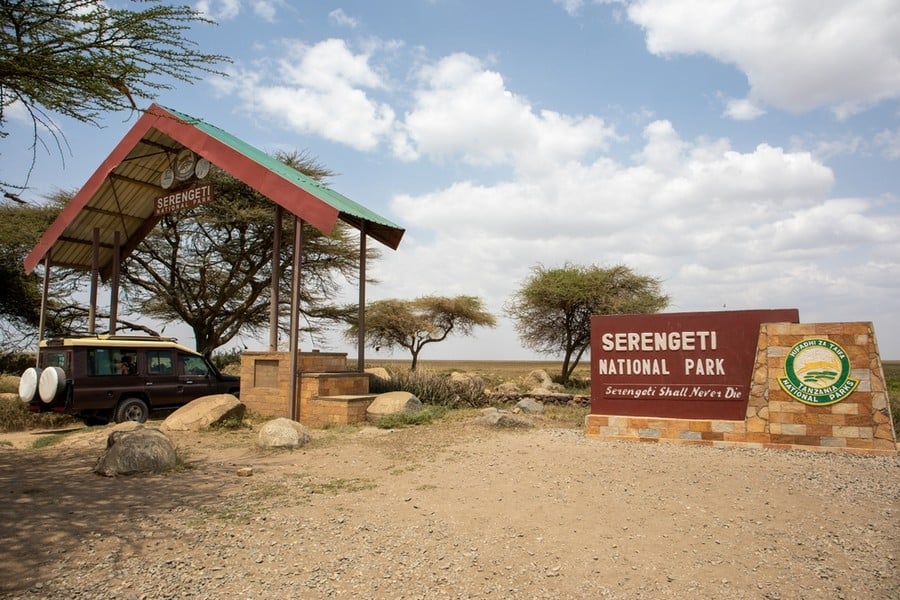
Serengeti National Park was established in 1951.
The roots of the park date back to the early 20th century, during the colonial era. European explorers and hunters were captivated by the richness of wildlife and the expansive landscapes. Concerns over hunting and the potential depletion of wildlife led to the creation of a partial game reserve in the 1920s. This marked the beginning of the conservation movement in the region, though initially, it was more about preserving game for hunting rather than conserving biodiversity.
The end of World War II brought significant changes. There was a growing awareness of the importance of protecting ecosystems for their intrinsic value, not just as hunting grounds. In 1951, the British colonial government officially established the Serengeti National Park. This marked a pivotal moment, shifting the focus to conservation and the protection of wildlife for future generations.
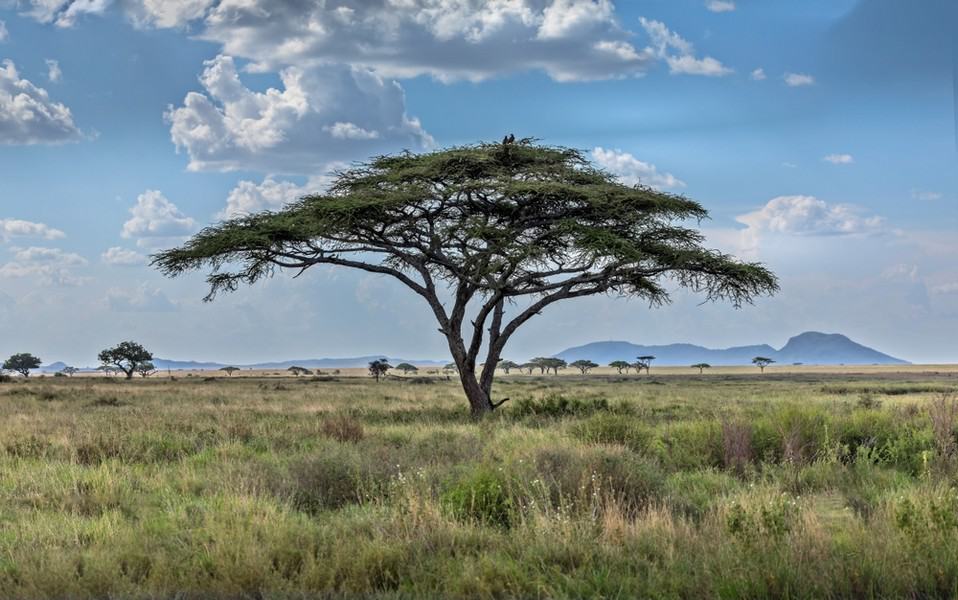
In the following decades, the park became a hub for scientific research. Notably, the work of Bernhard Grzimek and his son Michael in the 1950s and 1960s was crucial. Their aerial surveys of wildlife and the subsequent book and film “Serengeti Shall Not Die” brought international attention to the region. Their efforts highlighted the importance of the ecosystem, particularly the Great Migration, and were instrumental in galvanizing global support for conservation.
In 1981, the Serengeti was designated a UNESCO World Heritage Site, a recognition of its unparalleled ecological significance. This status has helped protect the park from threats such as poaching and encroachment, ensuring its preservation as a symbol of global natural heritage.
Who Lives in Serengeti?
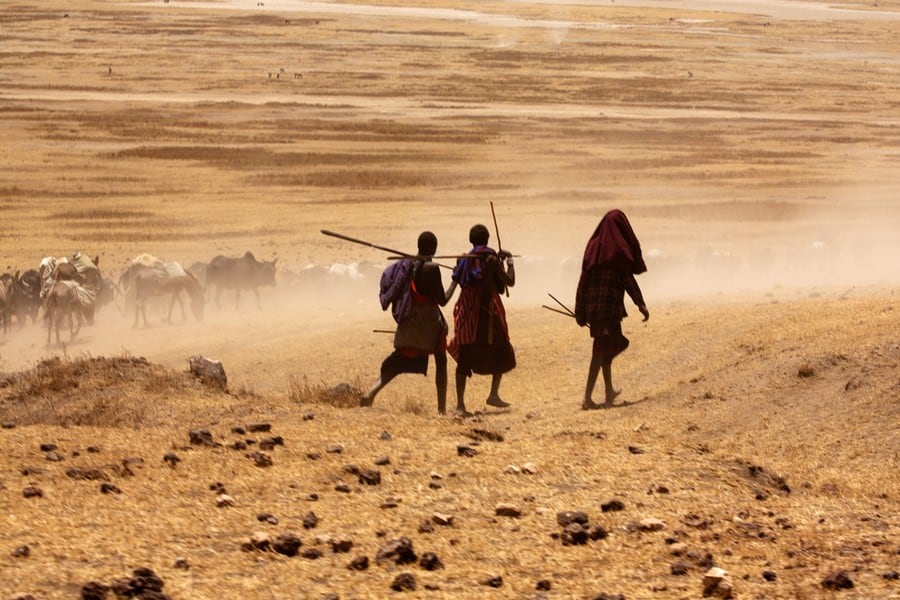
Long before the Serengeti was designated as a national park, it was an undisturbed part of Africa, roamed freely by the Masai people. This land, untouched and governed by the rhythms of nature, was a part of a larger ecosystem that included the lands that today make up Kenya and Tanzania.
The Masai live a semi-nomadic lifestyle, centered around cattle herding. Cattle are not just an economic asset but a fundamental part of their culture, symbolizing wealth, social status, and sustenance. The Masai have traditionally lived alongside Africa’s big game, respecting the wildlife and understanding their behaviors.
To preserve the Serengeti ecosystem, the Masai, who had lived in harmony with the wildlife for centuries, were moved to the Ngorongoro Conservation Area in the 1950s. While this was deemed necessary for conservation, it raised complex issues about the rights of indigenous people and their role in environmental stewardship.
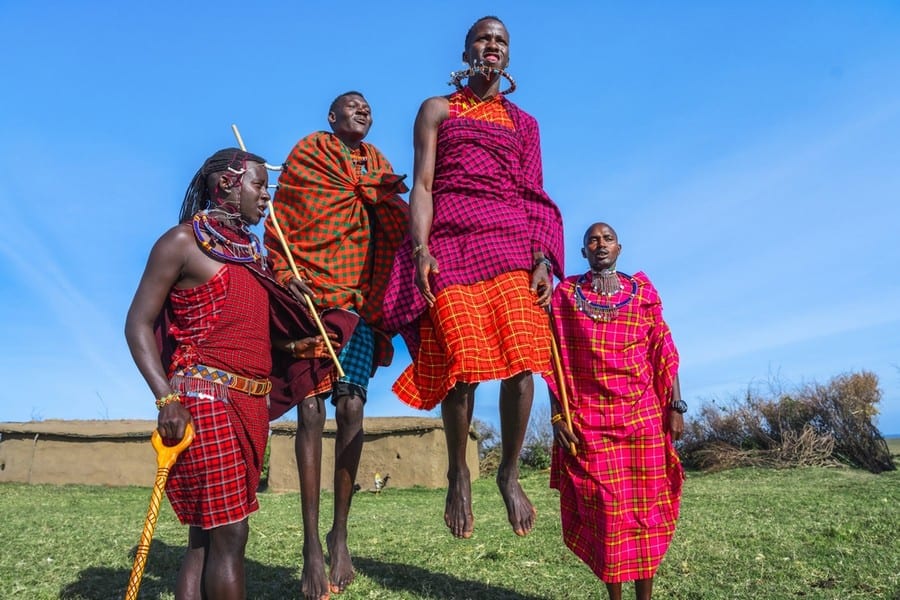
Maasai culture is vibrant and distinctive, easily recognizable by their bright red clothing, called “Shuka”, intricate beadwork, and traditional jumping dance, known as the “Adumu”.












































